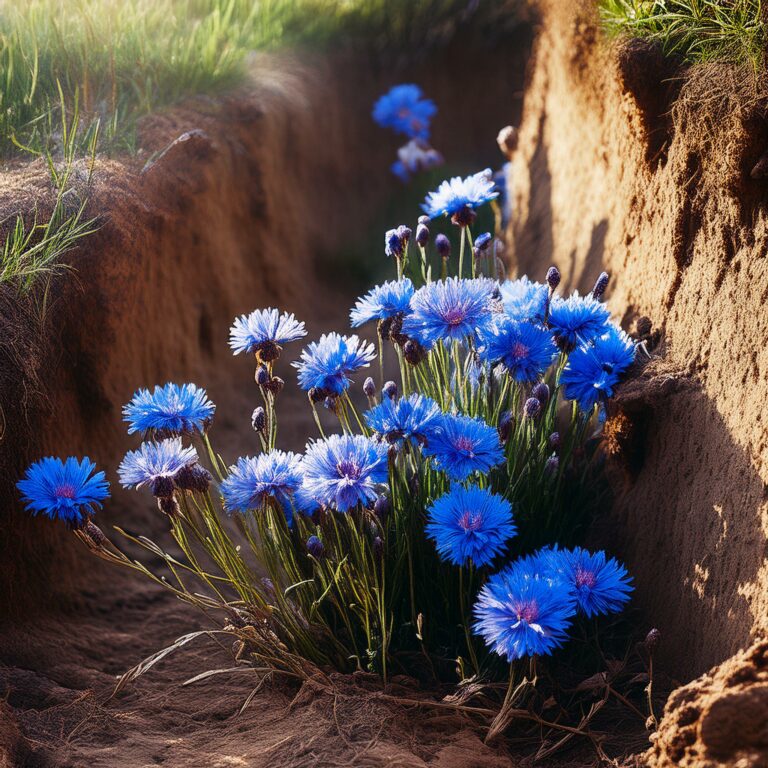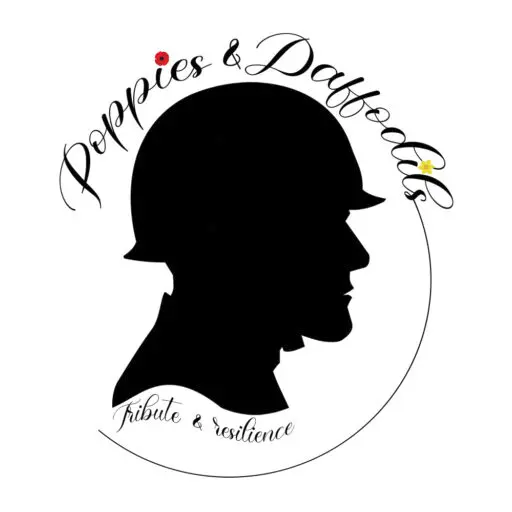The Poppy of the Commonwealth countries.
The poppy thrives in freshly turned soil. Lieutenant-Colonel John McCrae, a physician in the Canadian Army Medical Corps, noticed this when he saw many poppies growing in the trenches and around the graves of his fallen comrades during the Second Battle of Ypres in May 1915.
The bloom of red flowers stood in stark contrast to the surrounding desolation, reminding him of the blood shed by his comrades. Also a poet, this image inspired him to write the famous poem “In Flanders Fields.”
In Flanders Fields
By John McCrae
In Flanders fields the poppies blow
Between the crosses, row on row,
That mark our place; and in the sky
The larks, still bravely singing, fly
Scarce heard amid the guns below.
We are the Dead. Short days ago
We lived, felt dawn, saw sunset glow,
Loved and were loved, and now we lie,
In Flanders fields.
Take up our quarrel with the foe:
To you from failing hands we throw
The torch; be yours to hold it high.
If ye break faith with us who die
We shall not sleep, though poppies grow
In Flanders fields.


Oh! you who sleep in Flanders Fields,
Sleep sweet – to rise anew!
We caught the torch you threw
And holding high, we keep the Faith
With All who died.
We cherish, too, the Poppy red
That grows on fields where valor led;
It seems to signal to the skies
That blood of heroes never dies,
But lends a lustre to the red
Of the flower that blooms above the dead
In Flanders Fields.
And now the Torch and Poppy Red
We wear in honor of our dead.
Fear not that ye have died for naught;
We’ll teach the lesson that ye wrought
In Flanders Fields
By Moina Michael
This poem eventually crossed the Atlantic and deeply moved Moina Michael, a university professor and member of the World Young Women’s Christian Association (World YWCA). In turn, she wrote a poem in response to John McCrae’s and advocated for the idea of using the poppy as a symbol of remembrance for soldiers who had fallen in battle.
This idea was adopted in 1920 by the American Legion during a congress. Anna E. Guerin, a member of the YMCA in France and a participant in the congress, proposed making and selling fabric poppies on the anniversary of the armistice to raise funds for war orphans. In 1921, Douglas Haig, founder of the Royal British Legion, decided to sell these poppies to provide financial assistance to wounded and unemployed veterans.
From 1922 onwards, many countries embraced this symbol of remembrance and support, initiating the production of paper poppies. Today, 40 million paper poppies are made by disabled veterans in a factory located in Richmond Upon Thames. These poppies are sold starting at the end of October and are worn until November 11th.
Remembrance Sunday takes place on the second Sunday of November, closest to November 11th. This commemorative day, also called “Poppy Day,” honors British and Commonwealth military personnel and civilians who died during the two World Wars as well as in subsequent conflicts.
The Bleuet de France (Cornflower of France)
The Bleuet de France, like the poppy, is a flower that thrives in freshly turned soil. It grew abundantly in the bombarded fields of the Great War, where its vibrant blue color contrasted with the desolation experienced by soldiers in the trenches.
The blue color of the cornflower also echoed the new uniforms of young recruits arriving at the front, which stood out against the dirty, worn attire of seasoned soldiers.
In 1916, Madame Suzanne Lenhardt, head nurse at the military hospital of Les Invalides, and Madame Charlotte Malleterre organized workshops where wounded soldiers could craft fabric cornflowers. This initiative aimed to restore hope and a sense of purpose to these men by providing them with a modest income through the sale of these artificial flowers to the public.
The Bleuet de France quickly became the symbolic flower for those who died for France. It has been officially sold every November 11th throughout France. After World War II, the Bleuet de France also began to be sold on May 8th, Victory in Europe Day.
Each year, the Bleuet de France is sold in public spaces by volunteers from the Œuvre Nationale du Bleuet de France during the November 11th and May 8th commemorations. The funds raised support social programs that assist veterans, war widows, orphans of war, injured soldiers, active-duty personnel, and victims of terrorism.
The organization also supports active-duty soldiers deployed in operations, participating in initiatives such as the “Christmas Parcels for Soldiers in Ongoing Operations” campaign. It also engages with students in schools, middle schools, and high schools by promoting remembrance through funding trips to memorial sites.

